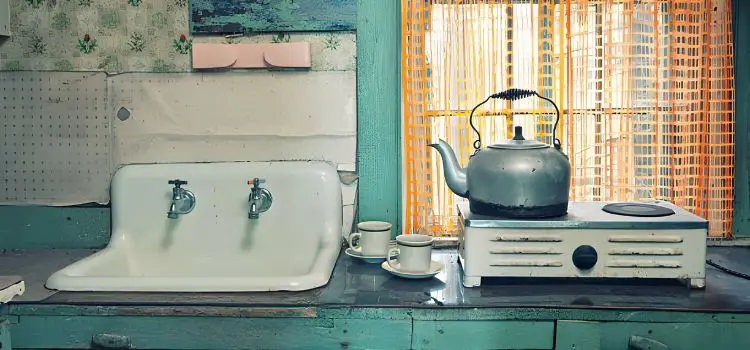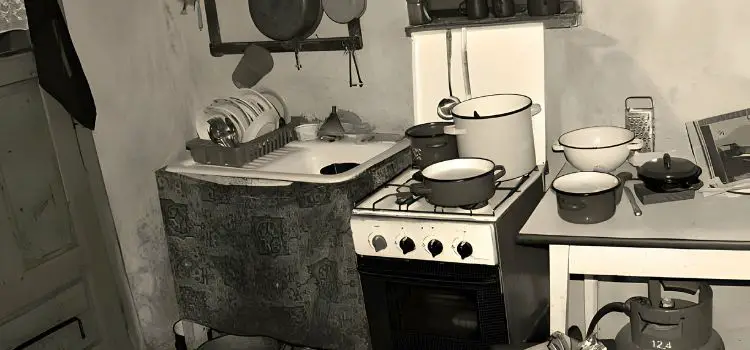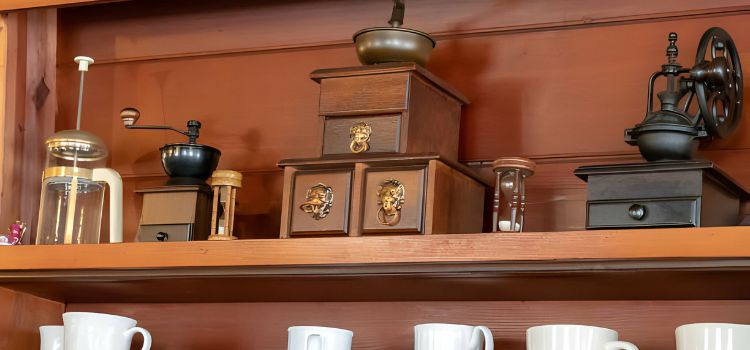As an Amazon Associate, I earn from qualifying purchases

Embark on a journey through time with “Nostalgia and Innovation: Exploring the Charm of 1890s Kitchen.” Delve into the distinctive features, architectural elements, and culinary practices that defined kitchens during this era. From the influence of the Arts and Crafts movement to technological advancements, discover the unique blend of tradition and innovation that characterized 1890s kitchens, offering a glimpse into the culinary past where nostalgia and progress converged.
Architectural Elements

Explore the defining architectural elements of 1890s kitchens in this brief glimpse into a bygone era. Discover the influence of the Arts and Crafts movement on design aesthetics, featuring sturdy wooden cabinetry and efficient layouts. Uncover the unique charm of these kitchens, where simplicity and functionality took center stage, leaving an enduring mark on culinary spaces of the late 19th century.
Design Aesthetics
In the 1890s, kitchens were designed with a focus on functionality and simplicity. The Arts and Crafts movement heavily influenced design aesthetics, embracing handcrafted elements and natural materials. Kitchens often featured sturdy wooden cabinetry, open shelving, and a preference for muted colors that exuded a sense of warmth.
Layout
The layout of 1890s kitchens reflected a shift towards efficiency. Designers organized workspaces in a triangular fashion known as the “kitchen work triangle,” where the stove, sink, and preparation areas formed the three points. This layout aimed to streamline the cooking process, minimizing unnecessary movement.
Culinary Practices

Step into the culinary world of the 1890s as we unveil the distinctive practices that shaped kitchen activities during this era. From wood-burning stoves as the centerpiece to the art of preservation through canning and pickling, this brief exploration offers a snapshot of how families approached cooking and food storage. Journey back to a time when cast iron cookware and brick ovens were kitchen essentials, and witness the culinary ingenuity that defined households in the late 19th century.
Cooking Methods
Wood-burning stoves were the centerpiece of 1890s kitchens, offering a reliable and versatile means of cooking. Families commonly used cast iron cookware due to its durability and even heating. They relied on coal or wood for fuel, and often used brick ovens for baking.
Preservation Techniques
Canning and pickling gained prominence as methods of food preservation during this era. Families utilized root cellars to store vegetables while pickling in vinegar or fermenting in crocks allowed them to extend the shelf life of produce.
Tools and Utensils
Discover the tools and utensils that graced 1890s kitchens in this concise exploration of a bygone culinary era. From hand-cranked appliances like butter churns and coffee grinders to the introduction of iceboxes for keeping perishables cool, this brief overview unveils the technological advancements that shaped kitchen functionalities. Immerse yourself in the charm of a time when manual efforts were applied to various kitchen tasks, showcasing the innovation and resourcefulness of households during the late 19th century.
Hand-Cranked Appliances
The 1890s witnessed the introduction of hand-cranked kitchen appliances. Butter churns, coffee grinders, and ice cream makers were operated manually, requiring physical effort but offering a degree of control over the process.
Iceboxes
While refrigerators as we know them were still a few decades away, iceboxes became a popular means of keeping perishables cool. Blocks of ice were placed in the upper compartment, with the cold air naturally descending to chill the lower storage area.
Technological Advancements
Embark on a journey through the technological landscape of 1890s kitchens in this brief exploration. Witness the advent of gas lighting and stoves, replacing traditional oil lamps and providing a more convenient heat source. Experience the improvement in hygiene with the increasing prevalence of indoor plumbing, transforming kitchen spaces. This succinct overview offers a glimpse into the innovative strides that characterized the culinary technology of the late 19th century, shaping the way families approached cooking and daily life.
Gas Lighting
Gas lighting gained popularity as a technological leap, replacing traditional oil lamps. Simultaneously, gas stoves emerged and became widely used, providing a more convenient and controllable heat source for cooking.
Water Plumbing
The 1890s witnessed an increased focus on sanitation and hygiene. Indoor plumbing became more common, bringing running water to kitchens and significantly improving cleanliness.
The Role of Servants
In the 1890s, many households still employed domestic servants to assist with kitchen tasks. The division of labor was distinct, with specialized roles for cooking, cleaning, and serving. The kitchen, though functional, was often hidden from the main living areas, maintaining a separation between the private and public spheres.
Learn more about Kitchen Ready Tomatoes
Transition to the 20th Century
As the 19th century came to a close, the kitchen landscape was on the brink of significant transformation. The technological advancements and changing societal norms laid the groundwork for the modern kitchens that would emerge in the 20th century. The 1890s kitchens, with their blend of nostalgia and innovation, serve as a fascinating chapter in the ongoing story of culinary evolution.
Conclusion
The 1890s kitchen was a space where tradition and progress converged, shaping the way families approached food preparation and communal living. From the humble yet efficient layout to the introduction of hand-cranked appliances and gas lighting, this era laid the foundation for the kitchens we know today. Exploring the charm of 1890s kitchens allows us to appreciate the resilience and adaptability of culinary spaces throughout history.
Frequently Asked Questions (FAQs)
Yes, kitchens in the 1890s were often smaller compared to modern kitchens. The emphasis was on functionality, and the layout was designed for efficiency.
Families relied on iceboxes, where blocks of ice helped keep perishables cool. Additionally, preservation techniques such as canning and pickling were widely employed.
Oak and pine were popular choices for kitchen cabinetry during the 1890s. These woods were sturdy and complemented the overall design aesthetics of the era.
Hand-cranked appliances required physical effort but offered a level of control over the process. While they demanded manual labor, they were considered innovative for their time.
The transition brought about significant changes, including the introduction of more advanced technologies, larger kitchen spaces, and a shift towards the integration of kitchens into the overall design of the home.
Leave a Reply